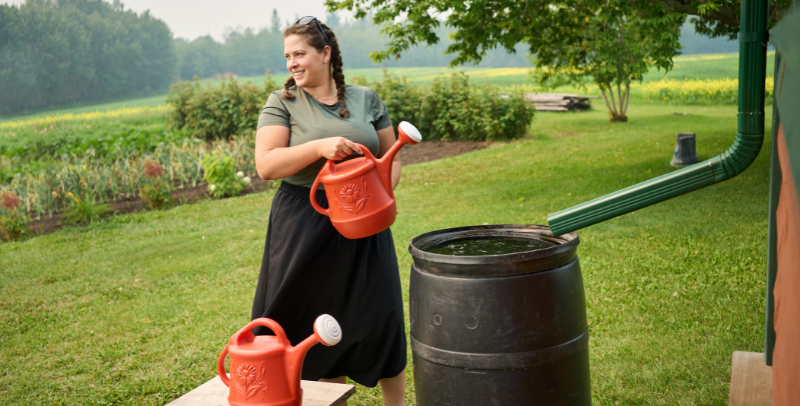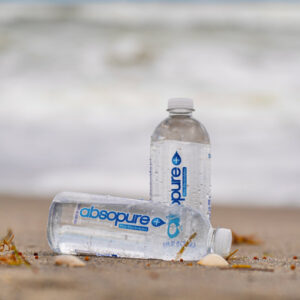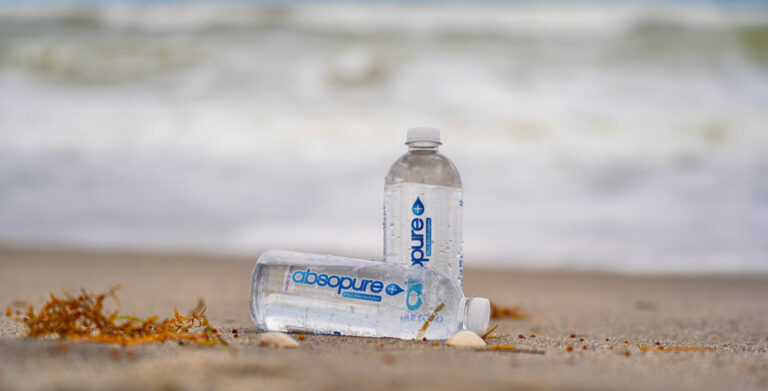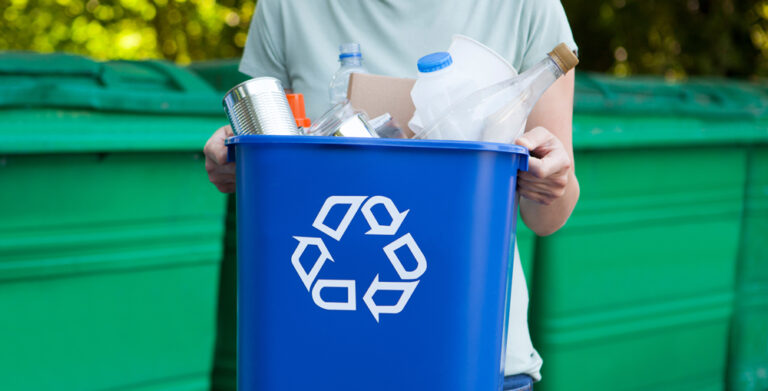Absopure
(un)Filtered

5 Smart Ways to Conserve Water While Gardening
Your beloved garden might be guzzling more water than you think. In the U.S., outdoor irrigation for lawns and gardens uses about 8 billion gallons of water every day, and up to half of that is wasted through evaporation, wind, or overwatering. A few simple changes can make water conservation gardening both easy and rewarding. You can keep your plants happy and healthy while slashing water waste—saving the environment and your water bill.
Here are five easy gardening tips to conserve water without sacrificing your garden’s beauty (plus a bonus reminder to keep yourself hydrated with Absopure).
Water Early (or Late) in the Day
Timing is everything when it comes to watering a garden. Instead of watering midday, when you can lose as much as 30% of your water to evaporation, aim for the cooler hours of the morning or early evening to reduce evaporation dramatically and have more of your water soak into the soil.
Shift your watering schedule to dawn or dusk, and you’ll immediately start conserving water while gardening more effectively. Plus, you’ll avoid working up a sweat under the midday sun.
Mulch is Your Moisture-Saving Best Friend
Your garden is thirstier than it needs to be without mulch. Think of mulch as a protective blanket for your soil, locking in moisture and shielding the ground from the scorching sun. A layer of organic mulch, like wood chips, straw, or shredded leaves, spread a few inches thick around your plants can significantly reduce water loss through evaporation.
With mulch keeping the soil cooler and damp longer, you won’t have to water as often. Plus, it helps control weeds, and fewer weeds mean less competition for the moisture in the soil. As a bonus, organic mulches break down over time and enrich your soil, improving its water-holding capacity even more.
Choose Drought-Tolerant or Native Plants
Not all plants are created equal when it comes to thirst. A lush lawn or exotic flower might demand daily drinks, but many native and drought-tolerant garden plants can thrive with minimal watering because they’re adapted to survive on what nature provides.
Native species often require little water beyond normal rainfall once planted, and in some cases, a well-designed native landscape can virtually eliminate the need for extra irrigation. Imagine a garden that mostly waters itself!
Practicing water conservation in gardening at the design stage will save water, prove easier to maintain, and be more resilient against pests and diseases. Here are a few plant options you can try:
- Native wildflowers and perennials. Plants like purple coneflower or black-eyed Susan flourish on natural rainfall and add vibrant color.
- Succulents and drought-hardy herbs. Think lavender, sage, yarrow, or sedums. These plants originate from dry climates and prefer infrequent watering.
- Drought-resistant groundcovers or grasses. Replace portions of a thirsty lawn with ornamental grasses (like blue fescue) or groundcovers (like thyme or creeping sedum) that stay green with little irrigation.
Use Drip Irrigation or Soaker Hoses
Sprinklers may make for a pretty lawn mist, but they’re notoriously inefficient for gardens. Spraying water into the air invites evaporation and often douses areas that don’t need water.
Enter drip irrigation for gardens or its simpler cousin, the soaker hose. These low-volume irrigation methods deliver water slowly and directly to the base of your plants, right where the roots are. The result is almost no water loss to wind or evaporation and no more puddles of runoff washing away your effort.
Drip or trickle irrigation can drastically slash water waste compared to traditional sprinklers. And the good news is that they’re widely available and easy to set up in a home garden. Hook them to your hose or rain barrel, snake them through your garden beds, and let them deliver water directly into the soil. It’s precision hydration, and your plants will thank you.
Collect and Reuse Rainwater
Why let free water go to waste? When storms roll through, harvest that rain for later use! Setting up a rain barrel under a gutter downspout is an easy way to collect hundreds of gallons of fresh water for your garden. A single 55-gallon rain barrel can save up to 1,300 gallons of water per year that you’d otherwise pay for from the municipal supply. That’s a lot of free irrigation!
You can use rain barrel water to sprinkle your vegetable patch, water container plants, or soak the roots of your trees during dry spells—all without turning on the tap. It’s all about getting creative and using water twice.
Just be mindful of what’s in the water, and always check your local regulations. Rainwater harvesting is restricted by law in a few places, so you’ll want to be sure it’s allowed in your area.
Hydration Reminder: Remember to Water the Gardener
In your quest to keep your plants quenched, don’t forget about yourself! Gardening is hard work, often under the sun, and it’s easy to get absorbed in chores and overlook your own hydration. Make it a habit to sip water regularly while you work—and reach for your favorite Absopure product to do it!
Aim to drink about half a bottle of Absopure water every 15-20 minutes when doing moderate outdoor activities in the heat. Staying well-hydrated will keep you energized, prevent heat-related issues, and make your gardening experience much more enjoyable.
Water is a precious resource. By adopting these smart strategies for water conservation while gardening, you’re helping the environment, nurturing healthier plants, and lowering your water bills.





